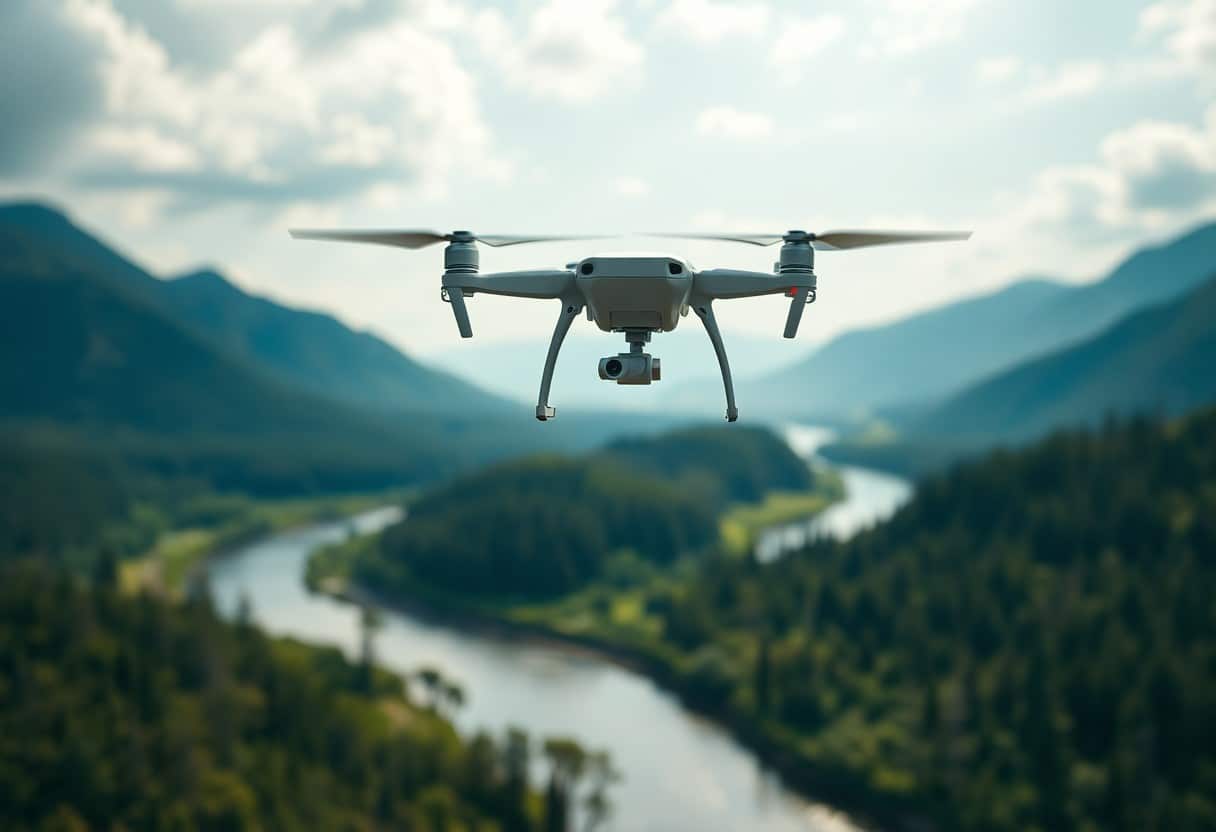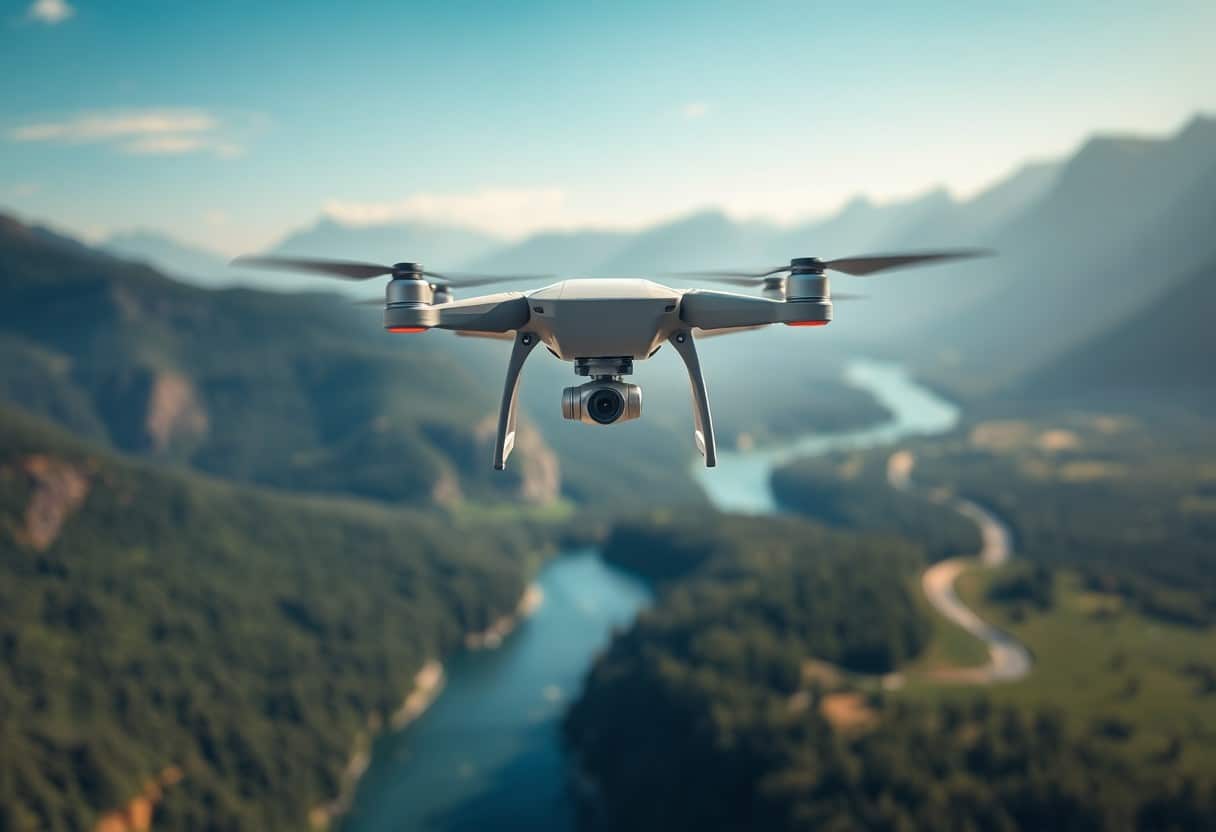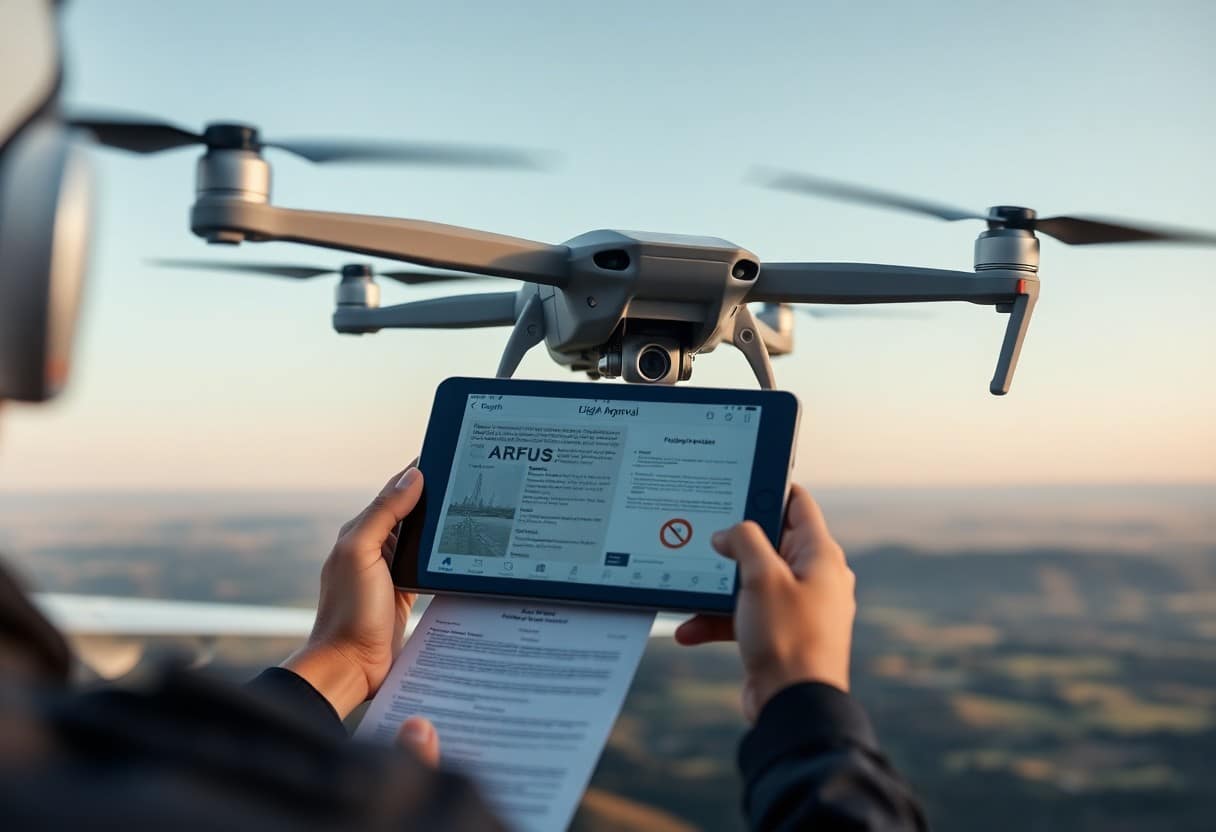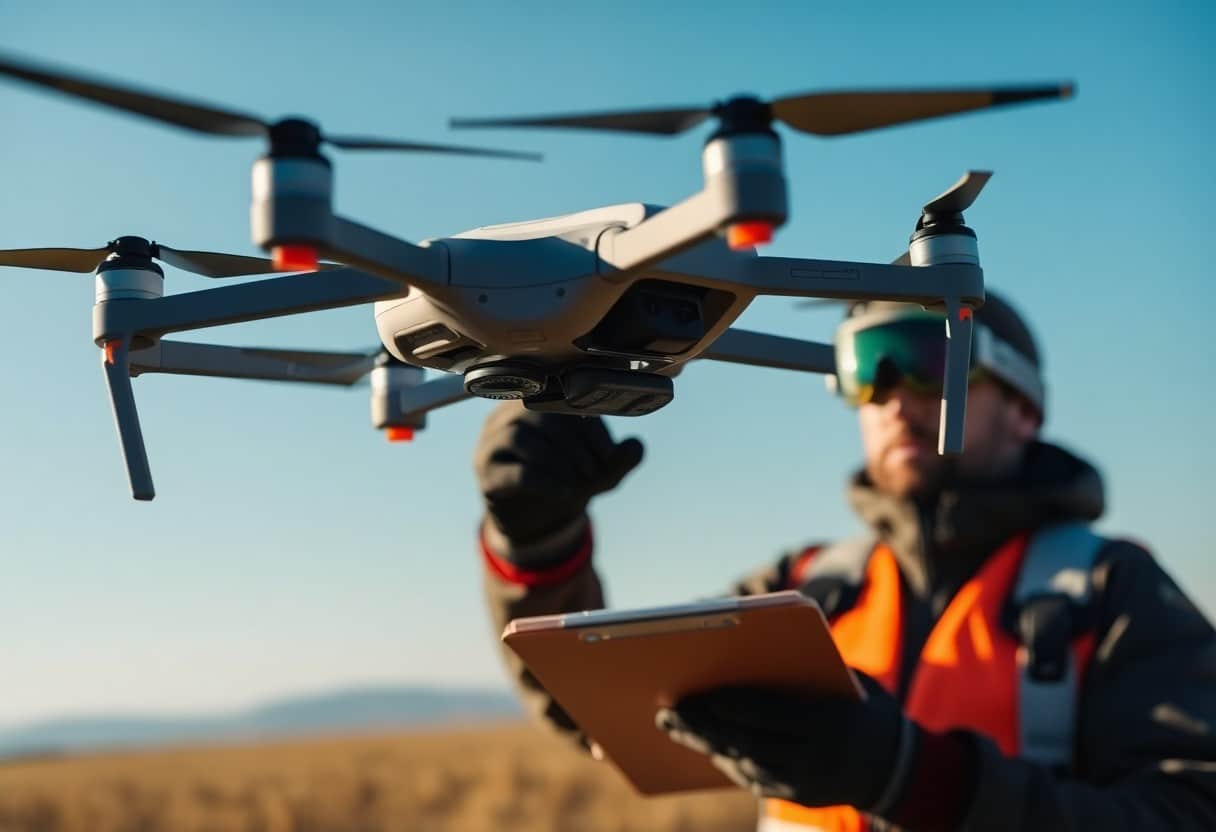Drone Photography Tips - 9 Steps to Capturing Stunning Aerial Photography
When capturing spectacular aerial photos, theDrone PhotographyThe possibilities are endless. This article will provide you withNine Essential TipsThe Driftless Drifter is a great tool to help you improve your shooting skills to create stunning images. In this digital age, understanding how to utilize the advantages of a drone can make your work even better. Whether you're a novice or a professional, these methods will help you improve your photography skills and create compelling aerial photos.
Key Points:
- Composition: Learn to use the rule of thirds to enhance the appeal of your images.
- light: Shooting in the golden hour, using natural light to enhance the quality of the image.
- high degree: Adjust the flight altitude to find the best angle of view to capture a full view of the scene.
- stability: Use stabilizers or proper flying techniques to reduce blurred images.
- (future) prospects: Enhance the layering of the picture by adding foreground elements to add depth.
- Aftermarket: Edit your photos appropriately after shooting to improve the overall quality of your photos.
- legislation: Understand and comply with local drone flying laws and regulations to ensure legal photography.
Getting to know your drone
Before you can master drone photography, you need to have a thorough understanding of your drone. This not only includes how it operates, but also covers its design and features. You need to familiarize yourself with the various controllers, camera equipment, and its flight performance so that you can ensure that you get the best results when shooting.
Types of photography drones
There are a variety of options available in the drone market, and depending on the features and design, they are suitable for different photographic needs.
- Consumer Drones - Suitable for amateurs, easy to operate.
- Professional Drone - Provides high-definition camera, suitable for professional photography.
- Aerial Drone - Designed for aerial photography with stable flight capability.
- Racing Drones - Fast and flexible for dynamic shooting.
- Portable Drones - Lightweight design, easy to carry.
Recognizing the different types of drones will help you choose the best equipment for your needs.
Basic Features to be Considered
When choosing the right drone photography equipment, there are severalBasic Characteristicsis something you must consider.
| Camera Quality | Affects the sharpness of the final image. |
| Flight Time | Directly determines the duration of the shoot. |
| Stabilization System | Ensures picture stabilization during photography. |
| Control distance | Affects the range over which the drone can fly. |
| Price | Need to plan to select a drone within your budget. |
When choosing a drone, you should focus on its camera quality and stabilization system, which will directly affect your results. Flight TimeThey are just as important as distance control, as they relate to the scene you are able to photograph. Finally.PriceIt has to fit your budget, but it's worth investing in high-performance equipment.

Planning Your Aerial Assignment
You need to plan your shooting assignment carefully before you go on an aerial shoot. Adequate Preparation and ConsiderationThis will help to ensure a smooth process and a great result. Determining the theme, composition and timing of your shoot will have a profound effect on the quality of the final product.
Research Locations
It is important to know where you plan to shoot. Investigate your surroundings to find the best angles and spots. You can also get inspiration by looking at past photos or using a mapping service. This will help you choose compelling locationsthat enhances the appeal of your work.
Check weather conditions
Checking the weather forecast is a step that should not be overlooked before scheduling an aerial. Unfavorable weather conditionsRain, strong winds, or clouds may affect your results. Choose to shoot in sunny or slightly cloudy weather for the best light and visibility.
It is worth noting thatSudden weather changesThere may be potential dangers associated with filming, especially when maneuvering the drone in strong wind conditions. Make sure you check the local weather forecast before each aerial shoot and be aware of weather conditions that could cause safety issues, such as wind speeds above [85] kilometers per hour. You should also be flexible and ready to adjust your plan according to the current weather conditions while filming.
Camera settings for optimal shooting
To capture great aerial images, the right camera settings are essential. Adjustments10 Basic Steps to Safe Drone Operation - Beginner's GuideYou need to consider parameters such as ISO, shutter speed and aperture, which will directly affect the quality of your shots.
ISO, Shutter Speed and Aperture
When it comes to aerial photography, choosing the rightISO,Shutter speedandapertureVery important. A high ISO value allows you to take pictures in low-light conditions, but may introduce noise. Shutter speed should be adjusted according to the movement of the subject to avoid excessive blurring. Aperture size affects depth of field, and choosing the right aperture will give you better control over the sharpness of the foreground and background.
White balance and color settings
White balance and color settings are critical to the realism and aesthetics of aerial images. When you shoot under different lighting conditions, adjusting the white balance ensures that your images will have the correct tones and colors. Improper settings can cause distortion or even unnatural colors in your images. Get more accurate color results by setting the White Balance manually, and remember, adjusting the color settings can make your aerial images more attractive.

Composition Tips for Aerial Photos
Composition is one of the key factors in aerial photography. Good composition not only enhances the beauty of the photo, but also guides the viewer's eye. You should utilize various compositional techniques such as symmetry, framed elements, and fisheye angles to enhance your work. Paying attention to the balance between the foreground and the background can make your aerial photographs even more intriguing.
Rule of thirds and guide lines
Using the rule of thirds can help you create visual balance in your images. Dividing the image into three parts and placing the main subject at the intersection will enhance the appeal of the photo. Also, leading lines are an effective technique, as you can use lines in nature, such as roads or rivers, to guide the viewer's eye into the image.
Unique angles and perspectives
Capturing unique angles and perspectives can make a difference in your aerial photography. Try shooting from unusual heights and orientations, which will make your photos more artistic and interesting. Whether it's from the side or overhead, these creative perspectives allow the viewer to see familiar sights in a new way.
exploratoryUnique AngleYou will find many details that you would not normally notice when you look at the camera from the same angle. This not only provides a sense of layering in a photograph, but also enhances emotional expression. For example, a low angle emphasizes the presence of the subject, while a high angle reveals a wider background. These techniques can make your photographs more vivid and engaging. Therefore, there is no such thing as a fixed shooting position; experimentation and creativity are the best way to go.
Safety and Legal Considerations
When doing aerial photography, it is important to understand thatsuretyandlegislationThe consideration of this is of paramount importance. The law states that unauthorized flight can result in serious consequences, including fines or civil lawsuits. Always follow local drone regulations and be aware of flight restrictions. For more information on the basics of drone photography, please refer to8 Steps to Accurate Drone Mapping and Aerial 3D ReconstructionThe
Understanding Airspace Specifications
You must be aware of the different types of airspace regulations to avoid flying into restricted areas. Each country or region has its own unique rules regarding prohibited areas and altitude limits for aerial photography drones. Make sure you check the relevant airspace maps before planning your aerial photography so that you can fly legally and safely.
Drone Safety Measures
Before drone photography, you should take the necessary safety measures to ensure the safety of your crew and equipment. It's important to keep your drone under regular maintenance to ensure it's functioning properly, and to check that the batteries, propellers, and other components are in good condition before you fly.
You should also be aware of the weather conditions and avoid using theStrong winds, heavy rainor other hostile environments. When operating a drone, it is important to keep your eyes open to ensure that you do not interfere with air traffic and to always respect the privacy of others, which is essential to ensure your and the public's safety.Key MeasuresThe

Post-processing your aerial images
Post-processing is a key step in enhancing your aerial images. You can make your photos more appealing by adjusting lighting, contrast and color. We encourage you to check outWhy is Blender considered the 3D modeling software of choice?This will help you with your spiritual and technical development.
Recommended Editing Software
Choosing the right editing software is crucial for your aerial photography. You may consider using Adobe Lightroom or Photoshop, which offer powerful features to help you fine-tune your images.
Enhanced color and sharpness
To make your images stand out, you can focus on theEnhanced color and sharpnessThis not only showcases the spectacular scenery you've captured, but also draws the viewer's attention to your creation. This not only showcases the beauty of the scenery you've captured, but also draws the viewer's attention to your work, allowing them to appreciate it more deeply.
In enhancing color and sharpness, make sure you don't overdo the editing and make the image look unnatural. You should utilize theColor Scale and Curvetool to enhance the contrast between colors, and moderately increase theImage SharpnessSo that every detail is clearly visible. By keeping the colors true to life while presenting excellent detail, you'll be able to achieve the desired results, making your aerial images not only stunning, but also highly professional.
Drone Photography Tips - 9 Steps to Create Compelling Aerial Photos
In conclusion, mastering the art of drone photography can dramatically improve your aerial photography. By choosing the right equipment, understanding lighting, composition and camera angles, you can capture amazing images. By practicing these 9 steps, your photography skills will mature as you gain experience, allowing you to take more attractive aerial photos. Remember to keep learning and experimenting so that your creativity can be extended indefinitely.
Frequently Asked Questions
Q: What is the best time to take aerial photos?
A: The best time to take photos is usually at sunrise or sunset, when the light is soft and the colors are rich, adding to the beauty of the photo.
Q: What kind of lens should I choose to take aerial photos?
A: For aerial photography, a wide-angle lens is the best choice because it captures a larger image and more of the scene.
Q: How do I keep my aerial photos stable?
A: The use of a 3-axis head and stabilizer can effectively reduce vibration. In addition, it is also crucial to keep the aircraft flying steadily.
Q: What do I need to do before shooting?
A: Ensure that you check the weather, site permits, equipment power and storage space, and conduct test flights to familiarize yourself with the site environment.
Q: How to edit and process aerial photos for best results?
A: Use professional photo editing software, such as Adobe Lightroom or Photoshop, to adjust contrast, color, and sharpness to enhance the quality of your photos.
Q: How do I choose my camera angle?
A: Experiment with different heights and angles to choose the best viewpoint that emphasizes the theme and creates a visual impact.
Q: What are the legal restrictions on taking aerial photographs?
A: In many countries and regions, aerial photography requires compliance with local aviation regulations and privacy laws to ensure that the required permits are obtained and followed.




